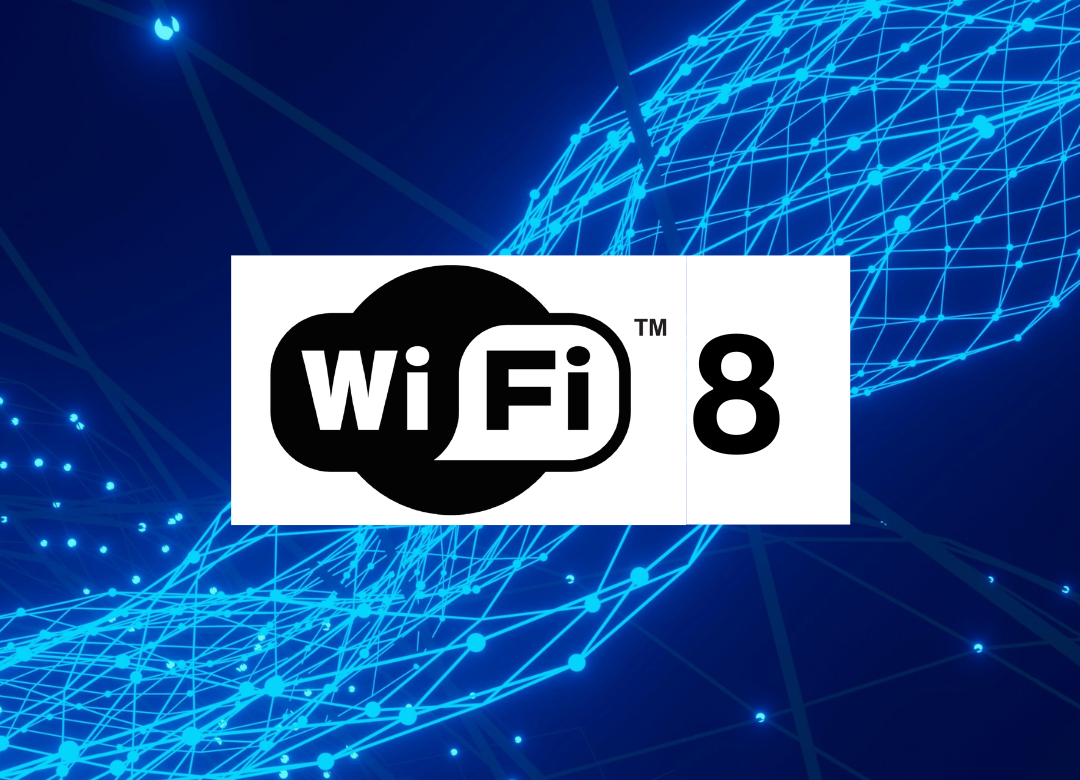As a society we’re always keen to get our hands on the latest technology – But no sooner as it’s in our hands, thoughts are already turning to what’s next.
You might have barely got to grips with Wi-Fi 6, but with 233 million Wi-Fi 7 devices estimated to enter the market this year, is it any wonder we’re already looking ahead to Wi-Fi 8?
What is Wi-Fi 8?
Simply put, it’s the next generation of Wi-Fi and will be successor to the Wi-Fi 7 (IEEE 802.11be) standard.
As with previous Wi-Fi standard successions, the aim of Wi-Fi 8 will be to improve wireless performance as well as introduce new and innovative features to advance Wi-Fi technology further.
Generally this means that in comparison to previous standards, the new one will offer:
- Faster speeds
- Lower latency
- Better performance
What’s the spec for Wi-Fi 8?
We don’t actually know the specifications of Wi-Fi 8 yet as the details haven’t been officially released.
But would it even be a technological advancement if there wasn’t speculation on the specifications?
We are expecting the technical details for Wi-Fi 8 to be finalised and released imminently.
What can we expect from Wi-Fi 8?
Over the years we’ve seen a steady evolution of Wi-Fi standards, with each one playing its own vital role in providing our indoor and outdoor environments with seamless wireless connectivity.
As the Internet of Things has also evolved over time, each standard has of course had its inadequacies, with a constant push for better.
So what will the upcoming Wi-Fi 8 standard offer to help with the current connectivity challenges we’ve been facing?
Wi-Fi 8 is expected to offer us a range of powerful new features and capabilities, designed to provide high-reliability, ultra low latency and support for extremely high node density.
A few of the major features we’re expecting from Wi-Fi 8 are:
- Multiple Access Point Coordination and Transmission
- Millimeter Wave (mmWave) Frequencies
- Low Latency
So let’s take a little look at each of these major Wi-Fi 8 features and what they mean.
What is Multiple Access Point (AP) Coordination and Transmission for Wi-Fi 8?
When a network has multiple access points deployed, e.g. in buildings and office complexes, they operate on the same radio frequency. This can cause interference and the degradation of network performance. To help alleviate this, the transmissions of the access points can be configured to avoid overlapping channels and coordinated accordingly.
Multiple Access Point (AP) coordination and transmission in Wi-Fi refers to the management of multiple access points in a wireless network to avoid interference and ensure efficient communication between the client devices and the network.
We can ensure that transmissions do not interfere with each other by using coordination techniques for Access Points. This could look like:
- Channel Allocation: Interference can be minimised by configuring Access points to use non-overlapping channels. This can be done manually or automatically using techniques such as Dynamic Frequency Selection (DFS).
- Power Management: Interference can be avoided by configuring Access points to adjust their transmission power based on their proximity to other access points.
- Load Balancing: Network loads can be balanced through configuring Access points by directing clients to connect to the least congested access point.
How can Millimetre Wave Links improve Wi-Fi 8?
Improvements in Wi-Fi 8 can be made using mmWave by providing access to a larger spectrum of frequencies. This in turn allows for higher bandwidth and data rates.
By using mmWave, Wi-Fi 8 can support data rates of up to 100 Gbps. What would this be useful for? This feature would be perfect for things like 4K and 8K video streaming as well as virtual and augmented reality. Other high-bandwidth and low-latency applications like these would also benefit.
Performance improvements will also be seen in environments with high node density with mmWave technology. Places like stadiums and concert halls will benefit from better coverage with Wi-Fi 8 as well as the reduction of interference between devices.
Information on a Project Authorisation Request document suggests that Ultra High Reliability technology will be a key part of Wi-Fi 8. It looks like it will be capable of support carrier frequencies in the mmWave bands between 42.5 and 71 GHz and achieving an aggregate throughput of 100 Gbps.
In comparison to Wi-Fi 7, it’s expected that UHR will offer improvements in maximum latency and jitter for latency-sensitive applications, especially those in the 99 to 99.9999th percentile range.
Wi-Fi 8 and Low Latency
Why is low latency so important? In this day and age, our modern industries rely on Wi-Fi in many industrial applications, e.g. real-time control systems, remote monitoring, robotic automation. Without fast and reliable communication between devices, the performance of these applications would degrade and cause big problems.
Even the smallest of delays in data transmission can cause significant errors or delays further down the system, affecting response time as well as negatively impacting production processes and potentially even causing safety issues.
The amount of data generated and transmitted over Wi-Fi networks is increasing rapidly as more industrial applications adopt the Industrial Internet of Things (IIoT) and other advanced technologies.
In order for this data to be transmitted accurately and quickly, it’s crucial that there is low latency to reduce delays and bottlenecks.
Previously, a latency of under 25 ms was achieved with Wi-Fi 7, using Restricted Target Wake Time (R-TWT), Stream Classification Service (SCS) and Quality of Service (QoS) signalling. However, this standard falls short of the current demands of industrial applications which need latencies of less than a few milliseconds.
Thankfully, the Wi-Fi world is expecting UHR to enhance and improve things in this area by minimising the maximum latency of Wi-Fi.
When will we be using Wi-Fi 8?
It’s estimated and expected that Wi-Fi 8 could become a market reality in 2027/2028.
Watch this space!

